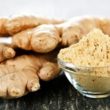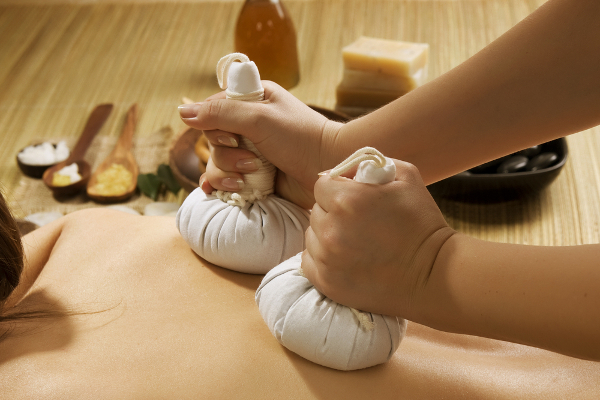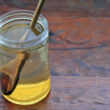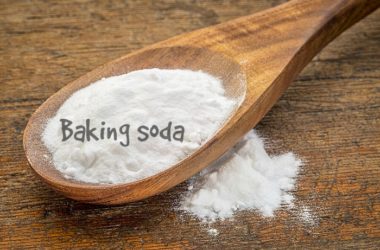An herbal poultice is a traditional, all-natural remedy that has sadly forgotten in modern times. It is one of the safest ways to use herbs and other natural remedies directly on the skin. Herbal poultices can be used for a variety of applications. They deliver health advantages of herbs but are less concentrated in nature when compared alongside tinctures and essential oils.
Essentially, a poultice is a paste made from clays, activated charcoal, herbs, salts, and other beneficial compounds that are then wrapped in a piece of cloth and placed directly on the skin. A waterproof layer of plastic or waterproof cloth is added onto the preparation as the poultice is left on for a few hours on the affected area .The ingredients are changed several times a day for best results.
You may also use dried herbs and other fresh beneficial substances to form a paste. The benefit of using a poultice is that natural healing ingredients are kept in constant contact with the affected areas for an extended period of time.
The usual indications to use poultices are for the following conditions:
- splinters
- boils
- infections
- skin infection and irritation
- burns
There are also cases wherein poultices are used to help in the management of internal problems.
Just like any other natural remedies out there, poultices should never be used as substitute to medical treatment and management. It is however an excellent supportive treatment for minor cases and ailments where medical attention is not required at all.
How do you make a poultice?
One big difference between a poultice and a compress is that the former makes use of whole herbs, plants, clay, and salt whereas the latter utilizes the liquid version of an herb or natural remedy.
The herbal mixture is combined to form a thick paste. Hot or cold water is added to make it more pasty and thick in texture. Usually, hot water is added for poultices that are formulated to remove or draw out abscesses. Cold water on the other hand is used in poultices that are meant to relieve inflammation.
Traditionally, mortar and pestle are used to ground up the herbs into paste. You may use the ever -fficient blender or food processor to smash the herbs at a faster rate. You may also use ground herbs in the production of poultices.
It is ideal to use a small amount of water when processing or smashing dry herbs. This technique is highly beneficial in that it extracts all the beneficial properties from the herb. Make sure the poultice has cooled down before applying it to the skin.
There are two ways on which you can use poultices:
- Apply the paste directly onto the skin
- Wrap the poultice in two layers of clean cheesecloth before applying it on the skin
You should use cheesecloth or an organic cotton as they are thin and do not absorb that much liquid.
The Different Types of Poultices
There are many different types of poultices that you can use as natural remedy for major skin conditions and ailments.
- Spider Bite
The main ingredients for a poultice used mainly to treat spider bites are baking soda and activated charcoal. You may also incorporate the use of bentonite clay as well as plantain once the swelling or inflammation from the spider bit is fading away.
- Onion Poultice to Manage Minor Illnesses
This poultice is becoming more popular in that it can heal many common illnesses. However bear in mind that this poultice is contraindicated among children. Cook a slice or two of onion and splash a little bit of water until it evaporates. Place the onions n between a cheesecloth and place it in a waterproof plastic bore putting it inside your socks at night. You may also use the onion poultice to the chest and back region to solve coughs and congestion issues.
- Insect Bites
For bee stings and insect bites, a plantain poultice is recommended. Place the dried plantain directly onto the skin and let it stay there fore a few hours. Some people recommend the use of plantain poultice to relieve boils as well.
- Cabbage Poultice to Relieve Mastitis
If you just delivered and are breastfeeding, you will encounter mastitis at one point in time. To relieve the pain as a result of this condition, you may use cabbage poultice. You only need a leaf or two of fresh cabbage for this treatment. You may also add garlic before applying it directly on the sore area. Instead of using antibiotics, the cabbage poultice is proven to get rid of pain brought about by mastitis.
- Garlic for Warts Removal
Garlic is one great ingredient for poultice if you want to get rid of warts fast. Simply make a garlic paste and apply it directly on the wart. Make sure not to apply the garlic paste to healthy skin as this may result in burns or irritation. Cover the garlic with bandage and let it sit on the wart for several hours a day until the warts disappear.
- Clay Poultice for Splinters and Boils
Getting rid of splinters as a result of boils can be easily remedied with the use of a bentonite clay poultice. Simply combine the clay with water and then apply it directly to the skin. Place a cheesecloth on top of the clay.













